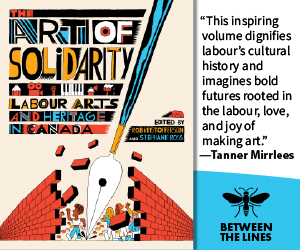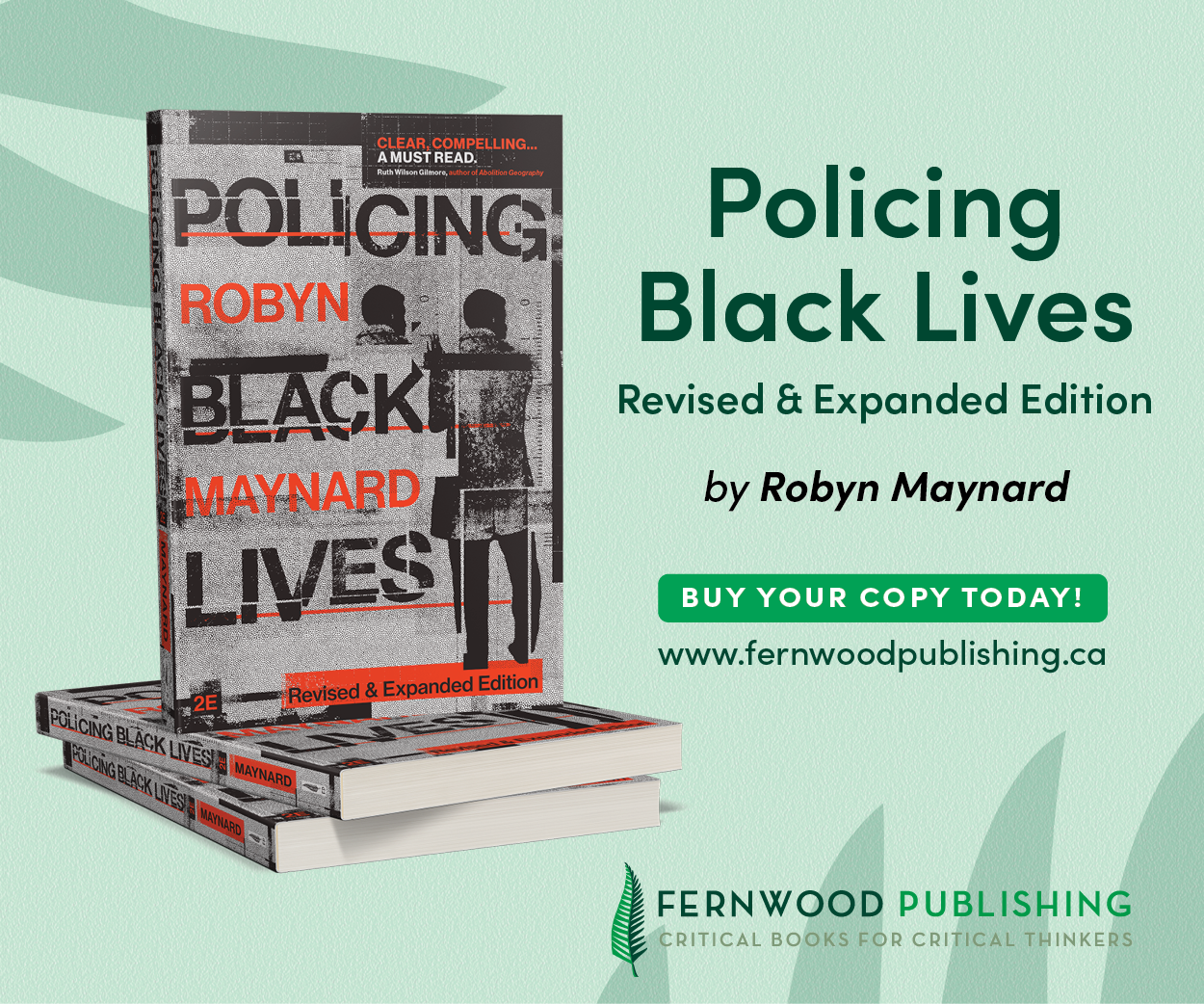The Fight for $15 Wage in B.C. and Beyond

Graphic by Krishna Lalbihaire.
If you find yourself in front of a Walmart or Starbucks in British Columbia on the 15th of any month this year, you just might find yourself amid a new and growing campaign to raise the minimum wage. Activists across B.C. are hitting the streets in the Fight for 15 campaign, endorsed by the B.C. Federation of Labour and supported by individuals and community groups throughout the province. Organizers are planning events for the 15th of every month until the provincial minimum wage is increased to $15 an hour.
B.C.currently has the ninth lowest minimum wage in Canada, at $10.25 per hour. This is below the $13-an-hour poverty level and only half the living wage in the mid-size and large cities, which ranges from $18 to $20 per hour. Like elsewhere in Canada, the U.S. and across Europe, stagnating wages, increasing job precarity and low-wage work are endemic. It is no wonder then, that movements to increase the minimum wage are increasingly popular. B.C.’s campaign joins those in Ontario, and Nova Scotia, and of course the myriad campaigns across the U.S.
The struggles in the U.S. provide inspiration for us north of the border. In B.C., we look south to SeaTac, Wa., a small municipality and the first to vote for an immediate raise to $15. This was followed by another successful campaign in Seattle and in over a dozen municipalities across the states. The American campaigns are becoming so successful that the right-wing lobby group ALEC — the American Legislative Exchange Council — has taken aim at ending the ability of municipalities to set minimum-wage rates. Despite this, the movement keeps growing. Oregon must change its minimum wage at the state level, but this hasn’t deterred “15 Now,” the vibrant activist coalition of community and labour.
Bridge to Unionization Efforts
The minimum-wage campaigns have been closely tied to the struggle to unionize in low-wage workplaces. Across North America, early attempts at unionization in large retail workplaces such as Walmart and Starbucks have met with draconian corporate responses. Notoriously, the successful organizing drive at a Walmart outlet in Quebec met with the shutdown of the entire store, putting all its employees out of work. Although workers were successful at getting some compensation in court, this type of action deterred new organizing drives.
In response, some unions turned to alternative methods of organizing low-wage workplaces. Unions such as the Service Employees International Union (SEIU) and the United Food and Commercial Workers (UFCW) have put considerable resources into a variety of organizations and campaigns aimed at countering these vulnerabilities. The OUR Walmart campaign attempts to address the vulnerability both of individual workers and also individual worksites by funding campaigns that cross employer and state boundaries. OUR Walmart focuses on direct workplace actions and solidarity actions directed at Walmart stores across the U.S. Jobs with Justice fights for bargaining rights in particular sectors but with multiple employers. The Fight for 15 focuses on a minimum-wage increase, which will affect all low-wage workers in a single jurisdiction. Worker centres provide advocacy and organizational hubs for non-unionized workers. In the best campaigns, the demands are combined, exemplified, for instance, in the slogan “Fifteen and a Union.”
Campaign Crosses Traditional Boundaries
As American labour journalist Nelson Lichtenstein described these alt-labour initiatives in Dissent magazine last July, “unlike a traditional organizing campaign, the fast-food movement — sometimes identified as part of an ‘alt-labour’ set of similar initiatives — seeks neither unionization nor a collective contract.…Instead, the periodic strikes and pickets have been directed against the entire fast-food industry. This has proven a brilliant stratagem: It unites rather than divides a workforce that in any event cycles from one low-paid service job to another; it keeps the attention of workers and the public focused upon the problems common to all employers in one huge industry.” The Fight for 15 is perhaps the broadest of these alt-labour campaigns, targeting all low-wage employers in multiple sectors.
In the past year, the growth and interplay between these campaigns, and the number of outright successes has demonstrated the ability of workers to reframe the debate on wages, unions and politics. This is in stark contrast to the “right to work” propaganda, and the false divisions sown by neoliberal politicians between private- and public-sector workers, and union and non-union workers. For too long, and in too many places, the dominant dialogue has been to blame public-sector workers — the last highly unionized sector in both Canada and the U.S. — as the source of debt, deficit, economic woes and cuts to social programs. The new solidarity expressed in campaigns like Fight for 15 is finally breaking down divisions and creating the space amid genuine struggle to revive the labour movement and to push politics left.
Fight for 15 demonstration, Vancouver, February 15, 2015. Photo from Twitter @gwomand; posted on rankandfile.
ca.
Shifting the Debate
Seattle exemplifies this new mood. In Seattle, the 15 Now campaign was intimately connected with the campaign to elect an openly socialist city councillor, Kshama Sawant. Because the municipality has the ability to control minimum wages in the city, the demand for 15 became central to city politics. Even the Democratic Party had to support the Fight for 15 to have credibility in the electoral arena. But the connection between the grassroots organizing and the electoral campaign provided a place to expose the hypocrisy of the Democratic Party as well as the conservative tendencies of the union bureaucracy. As the movement grew in popularity, the debate shifted from the question of should the minimum wage be $15 to the question of when should the minimum wage be $15. The Democratic Party, some of the labour movement, and the city establishment urged a slow, phased-in change. Meanwhile, the group 15 Now and the Sawant campaign pushed for a more immediate implementation. Several union locals broke with the Democrats and endorsed Sawant. While the final result did involve a phase-in, the campaign pushed the entire discussion to the left. It demonstrated that labour can back a socialist and a campaign with more militant demands and win. Sawant’s victory, the first win by an openly socialist candidate in half a century, electrified the U.S. electoral scene.
Seattle is not unique. This past year saw an escalation in the activities and actions of low-wage workers across the U.S. More than 20 jurisdictions saw minimum- wage rates rise during the year. This included a minimum-wage referendum on the November ballot in almost a dozen states, most of which were successful. Actions such as boycotts and rallies on the traditional Black Friday shopping day have exposed the treatment of low-wage workers in the retail industry. In 2014, the slogan “hands up, don’t spend” explicitly connected the Black Friday protests with the #BlackLivesMatter. The minimum wage has become an issue for the next presidential election, with Obama openly calling for an increase to the federal minimum. And perhaps most significantly, Walmart has announced it will be raising all workers’ wages to $9 per hour — a double digit increase for many workers.
Linking Actions to Public Interest
Meanwhile, the public attitude towards unions and their wage demands is improving. Chicago teachers led the most high-profile strike that broke down the anti-public union sentiment. They were successful due to specific work that linked the social benefits of public education to the actions of teachers and their union. Parents supported wage demands when teachers helped parents stop school closures and fight back against the tyranny of standardized testing regimes. Like in Seattle, there has been an electoral knock-on effect. The President of the Chicago Teachers Union, Karen Lewis, contemplated running against hated Democratic Mayor Rahm Emmanuel, but was unable due to health reasons. The first round mayoral results denied Emmanuel, a wealthy incumbent, an outright win and forced a runoff vote for mayor. At the same time, a plebiscite to have an elected school board was successful and a number of candidates for alderman, who ran on a Fight for 15 platform, will also have a chance at a runoff vote. Newly elected alderman Carlos Ramirez-Rosa actually unseated an incumbent and will be the first openly gay alderman in the city. He ran on a campaign for an elected school board, a $15 minimum wage, and reopening shuttered health clinics.
While the Fight for 15 campaigns may be most visible in retail and fast food, they involve a wide range of workers in a variety of industries. Care aides, housekeepers, receptionists and cashiers span a range of worksites from hospitals to hotels to grocery stores. Not unexpectedly, workers in equity-seeking groups, such as racialized and women workers, tend to be overrepresented statistically in low-wage jobs. Low-wage workers are no longer just the young or poorly educated. They span the age range to include the elderly unable to retire and university grads unable to work in their field. Low-wage work is often accompanied by poor working conditions and unfair employment practices, and this can affect different groups of workers in different ways. The horrific scheduling practices of many low-wage employers, for example, are particularly intolerable for single women workers with children. Working conditions in low-wage jobs are a women’s equality issue.
Building Solidarity
There is a tremendous opportunity to build solidarity through the synergy between minimum-wage campaigns, electoral campaigns, the traditional labour movement and anti-oppression activism. We need this solidarity now more than ever. Like elsewhere in Canada, the labour movement in B.C. is plagued by division and trapped in a cycle of bargaining to minimize concessions. The private sector has followed the same decline in unionization rates that we’ve seen across the globe. In the public sector, neoliberal attacks from government continue to erode wages and working conditions. In response, the public sector has fragmented.
Protester
from
a
Strike for 15 rally in Atlanta, GA, May 2014. Photo by the Associated Press; posted on tbo.com.
The B.C. Federation of Labour no longer includes the B.C. Nurses’ Union, after a highly public and contentious raid on licensed practical nurses from the Hospital Employees’ Union. B.C. teachers and CUPE educational assistants have fought over a shrinking piece of the education budget — the Learning Improvement Fund. Most importantly, the public sector completely failed at a united response to four years of wage freezes under the government’s “net zero” mandate following the recession of 2008. As a result, there are actually quite a few unionized public-sector workers who would themselves benefit from a minimum wage increase to $15 an hour.
Historically, we know that the last union upsurge of the 1960s and ’70s did not take place in a vacuum, it was presaged by the civil rights movement, the anti-Vietnam war movement and the generalized upturn in struggle. The upturn of that era shows us that the success of workers in making gains depends on not just the militancy of their own union, but the overall climate of worker and social movements. Employers get scared when strike rates are high, unionization levels are increasing, workers are fighting for racial and gender equity and particularly when there is broad solidarity of workers in action. It is with this context in mind that we should approach the Fight for 15. It is an opportunity not only to right the wrongs of poverty wages, but also to build new movements across old divisions.
This article appeared in the May/June 2015 issue of Canadian Dimension (Battling Austerity).









